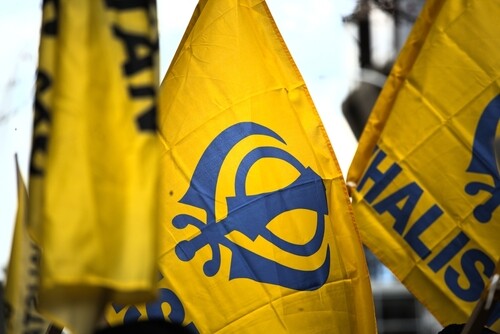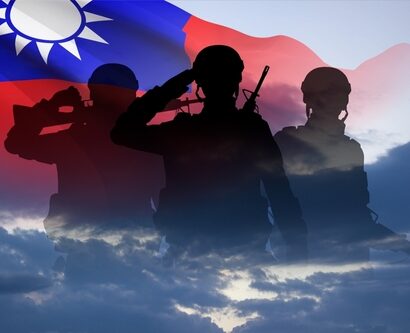Abstract: India and Canada have shared historic people-to-people relations, owing to the presence of an influential Sikh diaspora. However, the two countries have also shared discontentment due to the activities of anti-India elements in the form of Khalistani separatists. Canada’s reluctance to take concrete action against violent calls for damaging India’s diplomatic staff has resulted in India calling Canada a ‘safe haven for Khalistani militants.’
Problem statement: How come Canada’s civil liberties and dynamism have resulted in an anti-India movement amongst a small section of Canadian Sikhs?
So what?: The issue demands India and Canada’s partnership to address the grievances held by the Canadian Sikh community against the Indian establishment. The Canadian Government should act as a bridge between the Indian Government and the Canadian Sikh community rather than covering up the acts of vandalism and violence perpetuated by Khalistani separatists in the name of freedom and expression.

Traces of Sikh Secessionism in the West
India and Canada have been in a diplomatic tussle for the past few months over the killing of a Sikh separatist leader, Hardeep Singh Nijjar, who was killed on June 18, 2023, outside a Sikh gurudwara in Surrey, Canada. What followed after the alleged assassination was a series of allegations by Canadian Prime Minister Justin Trudeau, who accused the Indian Government of orchestrating the assassination of a Canadian citizen on Canadian soil without consulting the Canadian Government.[1] The discontentment between India and Canada has resulted in distrust among both countries’ diplomatic missions, potential trade and economic fallout, and immigration dilemmas. India has firmly denied any involvement in the Sikh separatist leader’s killing. It has instead asked Canada to share information regarding its investigation into the assassination, which the latter has not provided yet.
The discontentment between India and Canada has resulted in distrust among both countries’ diplomatic missions, potential trade and economic fallout, and immigration dilemmas.
During the G20 summit in New Delhi, Canada raised the issue with its Five Eyes Alliance partners, the U.S., the United Kingdom, Australia, and New Zealand. The U.S. and Australia have backed Canada in its investigation and asked for India’s cooperation, whereas the response from the United Kingdom and New Zealand has been largely muted.[2] The Western powers have shared rather sympathetic messages for Canada in the context of the killing of a Canadian citizen; however, according to Chietigj Bajpaee, a South Asia expert with the Chatham House, the issue will not adversely impact the Indo-Pacific pivot in the long run. For the U.S., India’s cooperation is necessary in the Indo-Pacific. Soon after Canada’s allegation, the United States of America also levelled allegations against an Indian man named Nikhil Gupta and claimed that he planned to kill another Sikh separatist leader and Sikhs for Justice’s President Gurpatwant Singh Pannun.[3] India’s response to both allegations is starkly different, with the former cooperating with the U.S. since the country has presented enough proof on a public platform.
It is safe to say that after an effective crackdown by the Indian police forces on Sikh separatist leader Amritpal Singh, who was considered the ‘reincarnation’ of Jarnail Singh Bhindranwale, India’s Punjab is not experiencing a revival of militancy.[4] However, the dominance of Sikh separatist leaders in Western countries, especially Canada, reflects a different narrative since the Sikh community is a significant vote bank in Canada, with 2% of the total population.
Background
The roots of the militant Khalistan movement go back to the 1970s and 1980s in Punjab, India, when Sikhs demanded more autonomy and, ultimately, a separate state for Sikhs called Khalistan (land of the pure). The actions of the Indian Government in the form of Operation Blue Star (OBS) further radicalised the section of the Sikh community, leading to the assassination of the then PM Indira Gandhi, which also led to the internationalisation of the issue. The assassination, in turn, provoked a section of the Sikh diaspora in Canada and other Western countries, who extended support to the cause of Khalistan through monetary means.[5] What followed after the assassination was a series of government-orchestrated pogroms in the national capital, New Delhi, which deliberately targeted the Sikh community, alarming the international community of alleged human rights violations in India.
Canada has provided refuge to persecuted individuals and communities, dating back to as early as 1770, with refugees from the American Revolution settling in Southern Ontario. Over the years, Canada has welcomed Jewish, Ukrainian, Chilean, Bangladeshi, Indo-Chinese, Kosovar, Bhutanese, Iraqi, and Syrian refugees.[6] After the events of 1984, the Sikh community, which was already thriving in Canada, entered Canada on grounds of religious persecution by the Indian Government. Pertaining to its civil liberties and commitment to freedom of expression, Canada has provided a safe platform and medium for Sikh separatists to voice their aspirations through largely peaceful and occasionally controversial means. In the present context, the Khalistan movement in Canada is influenced by many factors, such as domestic politics, diaspora influence, social media, geopolitics, transnational advocacy, and cross-cultural implications.
The digital age has transformed the way communities support their liberation cause as it has helped disseminate ideas and information to a worldwide audience at a much larger pace and has also given a voice to activists.[7] Canada boasts of multiculturalism and liberal values; however, with the evolving Khalistan movement in the country, it has been sandwiched in a balancing act where the country’s leadership is bound to protect and encourage freedom of expression among its citizens while also keeping a check on activities that might incite violent actions against a sovereign nation.
The digital age has transformed the way communities support their liberation cause as it has helped disseminate ideas and information to a worldwide audience at a much larger pace and has also given a voice to activists.
Khalistan Movement Outside of India
Though long dead in India, the Khalistan movement has resonated with some diaspora Sikhs who believe in establishing a sovereign nation for the Sikhs. The movement is considered to have grown outside of India on October 13, 1971, when an advertisement was published in the New York Times, proclaiming the birth of Khalistan. The ad was paid for by Jagjit Singh Chohan, the former Minister for Finance of Punjab, a major Sikh leader of the Khalistan movement outside of India. During his time in London, Chohan had connections with Pakistan’s Inter-Services Intelligence and its military officials.[8] After the crushing defeat in the 1971 Bangladesh Liberation War, Pakistan had dreamt of creating a buffer between India and Pakistan in the form of Khalistan to operate for the country’s geopolitical advantage. Jagjit Singh Chohan visited many Sikh shrines in Pakistan and urged Sikhs around the world to visit Pakistan with a motive to radicalise them to fulfil his separatist agenda.[9] In 1980, Jagjit Singh Chohan declared the ‘Republic of Khalistan’, appointed himself president, set up a cabinet, issued Khalistan passports, postage stamps, and Khalistan dollars. All this while he was in the United Kingdom.
Another Sikh separatist leader emerged in Canada with Talwinder Singh Parmar, gathering donations in the form of cash and jewellery across Canada. Parmar and his associates bullied moderate diaspora Sikhs for supporting a peaceful compromise.[10] According to the author of Blood for Blood: Fifty Years of the Khalistan Project, Terry Milewski, the Canadian Government’s lenient approach regarding the seriousness of the Khalistan movement, alongside the country’s politico-legal environment, accentuated secessionist tendencies.[11] India’s former Prime Minister and Khalistan movement’s biggest epicentre, Indira Gandhi, had written to her Canadian counterpart about the extradition of Talwinder Singh Parmar and had also expressed concerns about separatist Sikh groups in Canada financing violence and terrorism in India’s Punjab. However, her requests, or rather warnings, fell on Canada’s deaf ears, ultimately culminating in the Kanishka Disaster, as a result of which 329 people aboard a New Delhi-bound Air India Flight were killed. The Canadian Government’s and intelligence wing’s failure led to the conviction of only one individual, Inderjit Singh Reyat, in the Kanishka bombing case, who was also released in 2016.[12]
Subsequently, during the 2007 annual Baisakhi celebration at Surrey in British Columbia, posters hailing Talwinder Singh Parmar as a Sikh martyr were raised. British Columbia’s premier, Gordon Campbell, was also present during the rally with other Canadian leaders from the Liberal Party; however, no one spoke against the open glorification of one of the biggest terrorists in modern Canada’s history.[13] Finding extravagant portraits of Jarnail Singh Bhindranwale, Talwinder Singh Parmar, and other members of Babbar Khalsa International is fairly common in Canada’s gurdwaras (places of worship for Sikhs).
The intensity of anti-India activities in foreign countries has grown recently in two years with vigorous attacks on religious symbols, India’s foreign missions, and the organisation of a referendum to seek out the opinion of the diaspora Sikhs on establishing a separate state for Sikhs.[14] For instance, in 2023, multiple Hindu temples were defaced by anti-India elements in countries like Canada, Australia, the United Kingdom, and the U.S., with graffiti displaying slogans such as ‘Khalistan Zindabad, Hindustan Murdabad’. Moreover, there have been country-wide Khalistan referendums in Canada, the United Kingdom, Australia, Italy, and Switzerland, with over 1,00,000 people participating in the Khalistan referendum organised in Brampton on September 19, 2022.[15]
There have been country-wide Khalistan referendums in Canada, the United Kingdom, Australia, Italy, and Switzerland, with over 1,00,000 people participating in the Khalistan referendum organised in Brampton on September 19, 2022.
The Khalistani activities have not stopped here, as pro-Khalistan groups and individuals have also targeted Indian consulates. In February 2023, pro-Khalistan separatists targeted the Honorary Consulate in Brisbane and installed the Khalistan flag inside its premises. Similarly, in March 2023, in two separate incidents, separatists raised slogans and installed pro-Khalistan flags at the Indian Consulate in San Fransisco and the Indian High Commission in London. On June 04, before the annual anniversary of OBS, Brampton witnessed a parade which displayed a tableau celebrating the assassination of former PM Indira Gandhi and called it revenge for the desecration of the Golden Temple. The intensity of anti-India activities by pro-Khalistan supporters has increased in the recent past, given the rise of social media and broadcast messaging.
Canada’s Vote Bank Politics
Experts on the Khalistan subject have earlier addressed the reason behind Western governments not taking a firm stance against the Khalistani threat and anti-India activities in foreign nations as revolving around two predominant narratives. First, the West has no direct threat from the operations of Khalistan separatists, and second, in Canada’s case, its leadership does not want to disrupt a significant Sikh vote bank. Sikhs are Canada’s fastest-growing religious group, constituting 2.1% of the country’s population. Party leadership of both the Liberals and Conservatives tend to attract Sikh voters by participating in their religious festivals, parades, and gurudwara events. However, the Sikh voters in Canada are more inclined towards the Liberal Party and PM Justin Trudeau due to his presumably pro-immigrant and asylum policies for persecuted communities and individuals.
The Sikh voters in Canada are more inclined towards the Liberal Party and PM Justin Trudeau due to his presumably pro-immigrant and asylum policies for persecuted communities and individuals.
Sikhs were present and flourishing in Canada even before the 1980s. However, in the wake of extrajudicial killings, unlawful police encounters, and anti-Sikh pogroms in India, Canada became a sanctuary to several separatist leaders who were later declared terrorists in India, including Jagjit Singh Chouhan, Talwinder Singh Parmar and Hardeep Singh Nijjar. The aforementioned individuals entered Canada as refugees under Canada’s refugee policy.[16] Even today, many designated terrorists, like Arshdeep Singh Gill alias Arsh Dalla of Khalistan Tiger Force (KTF), are roaming freely in Canada and carrying out killings of political leaders in India.
PM Justin Trudeau’s reluctance to act against the known Khalistan separatists stems from the fact that in the 2019 federal election, the Liberal Party managed to get 157 votes, falling short of 13 votes for a full majority. Hence, the Liberal Party had to form a coalition government with the left-leaning New Democratic Party led by Jagmeet Singh Dhaliwal, a pro-Khalistan leader known for making anti-India statements at major events.[17] The political clout of the Sikh community can be understood by considering that out of 338 seats in the Canadian parliament, Sikhs are elected on 18 seats. Though forming only 2% of the population, Sikhs’ concentration in major cities such as Brampton makes their political influence count in Canada’s domestic politics. Moreover, many in the Sikh diaspora believe that the proportion of Sikhs representing Khalistani sentiments is far less than the Sikhs who prefer peaceful activism to represent their grievances against the Indian Government.[18] Therefore, Canada’s present vote bank politics and firm belief in freedom of expression have caused its government to take a soft stance on the anti-India activities that the Khalistani separatists have indulged in.
India’s Khalistan Paradox
The Indian Government has frequently asked the Western countries to take a firm stance against Khalistan separatism; however, its requests have not been taken seriously by the Western leaders. Khalistan separatism does not directly target the West. However, the Western leaders did not realise that the Khalistan movement of the 1980s was one of the deadliest movements in the history of independent India and took approximately 25,000 lives. At the same time, it was active in the Indian state of Punjab. It is indeed ironic that the Khalistan movement has no relevance in today’s Punjab since the Sikhs have moved on from the violence of the 1980s. However, the movement to establish a separate state for Sikhs in India’s Punjab is thriving in Canada, a country in the Northern Hemisphere. India considers the Khalistan movement as a threat to its national security and territorial integrity since it aspires to breakaway Punjab, a border and agricultural state, from India. The Indian Government has frequently raised the issue of Sikh separatist activism in Canada, given that such pro-separatism activities have the potential to encourage secessionist sentiments within India’s borders.
It is ironic that the Khalistan movement has no relevance in today’s Punjab since the Sikhs have moved on from the violence of the 1980s. However, the movement to establish a separate state for Sikhs in India’s Punjab is thriving in Canada.
Even before Canada had levelled allegations against India for the assassination of pro-Khalistan leader Harjeet Singh Nijjar, India had requested Canada to act against active Khalistan elements on Canadian soil and had alleged that in recent times, Canada had become a sanctuary for Khalistan separatists and sympathisers. Among other assertions, Indian officials have also claimed that some individuals in Canada are financing and propagating acts of terrorism in India under the guise of Khalistan activism. During the 2018 visit of Canadian PM Justin Trudeau to India, his invitation to a murder convict Jaspal Atwal strengthened India’s claims since it was seen as Canada cosying up to pro-Khalistan leaders. However, despite India’s repeated warnings, requests, and interventions, Canada has not taken a strict stand against Khalistan activism and wrapped it under the sheets of freedom of expression and freedom of conscience. However, the public nature of tensions between India and Canada has cast a shadow of apprehensions on both countries’ economic, strategic, political, and social relations.
Demanding a Thoughtful Strategy
It is indeed true that a small proportion of pro-Khalistan separatists do not represent the entire Canadian Sikh community since Canada is home to nearly 800,000 Sikhs, the second-largest after India’s Punjab. However, the situation arising due to Khalistan activities demands a thoughtful and careful strategy for both India and Canada. Canadian leadership should strike a balance between preserving freedom of expression and acting against those who indulge in violent anti-India activities and put efforts into building a platform wherein the Canadian Sikhs and the Indian Government can openly interact and redress their grievances. A significant proportion of Canadian Sikhs still harbour a deep grievance against the Indian establishment for its role in the OBS, anti-Sikh pogroms in Delhi, extrajudicial killings, and kidnappings of the Sikh youth during the peak years of militancy in Punjab. With this regard, the Indian Government and foreign missions have a responsibility towards the Sikh diaspora in Canada and elsewhere to engage in constructive and inclusive discussions. Through these discussions, Indian policymakers can address the grievance of the Sikh diaspora, which provokes such separatist sentiments among a significant proportion of the population.
India has held a historical grievance against the Canadian Government for repeatedly overseeing the Indian requests pertaining to the Khalistani elements being active on Canadian soil. Amid a diplomatic standoff between India and Canada, it remains pertinent for both countries to deploy diplomatic measures to build bridges with the Sikh diaspora to redress their underlying sentiments.
Amid a diplomatic standoff between India and Canada, it remains pertinent for both countries to deploy diplomatic measures to build bridges with the Sikh diaspora to redress their underlying sentiments.
In conclusion, the issue is not only the existence of pro-Khalistan sentiments among a few in the Sikh diaspora; rather the Canadian leadership’s reluctance to act against the perpetrators of financing terror activities in the Indian Punjab. Canada and India have shared bilateral relations, which, more than trade and economy, are defined by people-to-people relations due to the presence of a strong Indian diaspora, which mainly constitutes the Sikh diaspora. Hence, India, on its part, needs to establish a strong connection with its Sikh diaspora so that such diplomatic standoffs are handled with much precision. On a domestic front, the Indian Government can take steps to establish a Truth and Reconciliation Commission (TRC) to deliver justice to the Sikh community, which was a victim of the anti-Sikh pogroms after the assassination of PM Indira Gandhi. The commission will serve as the basis for Indian foreign missions’ outreach towards the Sikh diaspora in Canada and other Western countries and will contribute to the prevention of radicalisation among the diaspora Sikh youth. On an international front, Canada and India, which have already agreed on the Framework for Cooperation on Countering Terrorism and Violent Extremism,[19] should regularly share and act upon information on terror financing across borders and enhance cooperation between their respective law enforcement agencies. The issue at hand is historical; however, it needs a comprehensive approach from both India’s and Canada’s ends since it can downgrade the countries’ relations.
Shakshi Sharma is a Research Analyst at Varahe Analytics Private Limited. She has a postgraduate degree in International Studies from CHRIST University, Bengaluru and holds a Bachelor of Arts degree in Social Sciences from Panjab University, Chandigarh. She has previously interned at the Indian Council of World Affairs and MitKat Advisory Services. Her research interests include national security, drug menace in Punjab, and so on. She has previously published in The Defence Horizon Journal, The Pulse, The Diplomatist, etc. The views contained in this article are the author’s alone.
[1] John Paul Tusker, “Trudeau accuses India’s government of involvement in killing of Canadian Sikh leader,” CBC, last updated on September 19, 2023, https://www.cbc.ca/news/politics/trudeau-indian-government-nijjar-1.6970498.
[2] “Explained: What is Five Eyes Alliance And What It Has Said on Khalistan Terrorist’s Killing,” NDTV World, last updated on September 21, 2023, https://www.ndtv.com/india-news/explained-what-is-five-eyes-alliance-and-what-it-has-said-on-khalistani-terrorists-killing-4409781.
[3] “US accuses Indian agent of directing plot to assassinate American citizen,”The Guardian, last updated on November 29, 2023, https://www.theguardian.com/us-news/2023/nov/29/india-assassination-attempt-american-citizen.
[4] “Warless Punjab: The Amritpal Singh Arrest and Keeping Punjab Peaceful,” The Hindu, last updated on April 25, 2023, https://www.thehindu.com/opinion/editorial/warless-punjab-the-amritpal-singh-arrest-and-keeping-punjab-peaceful/article66773904.ece.
[5] Surinder S Jodhka, “Looking Back at the Khalistan Movement: Some Recent Researches on Its Rise and Decline,” Economic and Political Weekly, 36, no. 16 (January 2001): 1311-1313.
[6] “Canada: A History of Refuge,” Government of Canada, last updated on July 18, 2023, https://www.canada.ca/en/immigration-refugees-citizenship/services/refugees/history.html.
[7] Aakash Shaw, “Role of Social Media in Social Mobilization,” Global Media Journal, 7, no. 1 (June 2016): 1-8.
[8] Rajshree Jetly, “The Khalistan Movement in India: The Interplay of Politics and State Power,” International Review of Modern Sociology, 44, no. 1 (2018): 85-89, http://www.jstor.org/stable/45401459.
[9] Rishabh Sharma, “Dead in India, how Khalistani Movement stayed alive in Canada,” The Indian Express, last updated on September 29, 2023, https://www.indiatoday.in/history-of-it/story/khalistan-canada-sikhs-talwinder-parmar-air-india-kanishka-bombing-justin-trudeau-2442301-2023-09-29.
[10] Terry Glavin, “Glavin: A Short history of Canada and Khalistani terror,” Ottawa Citizen, last updated on March 07, 2018, https://ottawacitizen.com/opinion/columnists/glavin-a-short-history-of-canada-and-khalistani-terror.
[11] Terry Milewski, Blood for Blood: Fifty Years of Global Khalistan Project (India: HarperCollins, 2021).
[12] Milan Singh, “The Bombing of Air India Flight 182: Demanding Justice, Public Inquiries, and Acts of Citizenship,” (Phd diss., Simon Fraser University, 2015), 2.
[13] Rishabh Sharma, “Dead in India, how Khalistani Movement Stayed alive in Canada,” The Indian Express, last updated on September 29, 2023, https://www.indiatoday.in/history-of-it/story/khalistan-canada-sikhs-talwinder-parmar-air-india-kanishka-bombing-justin-trudeau-2442301-2023-09-29.
[14] Abhishek Verma, “Khalistan Movement: Recent Activities and Indian Response,” Manohar Parrikar Institute for Defense Studies and Analyses, last updated on July 26, 2023, https://www.idsa.in/issuebrief/Khalistan-Movement-averma-260723.
[15] Anurag Sharma, “Canada-based Khalistani elements: A Continuing Concern for Bharat,” Vivekananda International Foundation, last updated on October 30, 2023, https://www.vifindia.org/article/2023/october/30/canada-based-khalistani-elements-a-continuing-concern-for-bharat#_ednref6.
[16] “Canada: A History of Refuge,” Government of Canada, last updated on July 18, 2023, https://www.canada.ca/en/immigration-refugees-citizenship/services/refugees/history.html.
[17] S. Shailesh, “Canada and the Khalistan Separatists: Examining a Complex Relationship,” Cescube, last updated on August 16, 2023, https://www.cescube.com/vp-canada-and-the-khalistan-separatists-examining-a-complex-relationship.
[18] “Khalistan all noise, say Sikhs in Canada, doesn’t represent ‘silent majority’,” The Indian Express, last updated on July 23, 2023, https://indianexpress.com/article/cities/chandigarh/khalistan-all-noise-say-sikhs-in-canada-doesnt-represent-silent-majority-8854476/.
[19] “Framework for Cooperation between India and Canada on Countering Terrorism and Violent Extremism,” Ministry of External Affairs, last updated on February 14, 2018, https://www.mea.gov.in/bilateral-documents.htm?dtl/29513/Framework+for+Cooperation+between+India+and+Canada+on+Countering+Terrorism+and+Violent+Extremism#:~:text=Pursuant%20to%20the%20above%2C%20India,and%20legal%20and%20policy%20practitioners.





